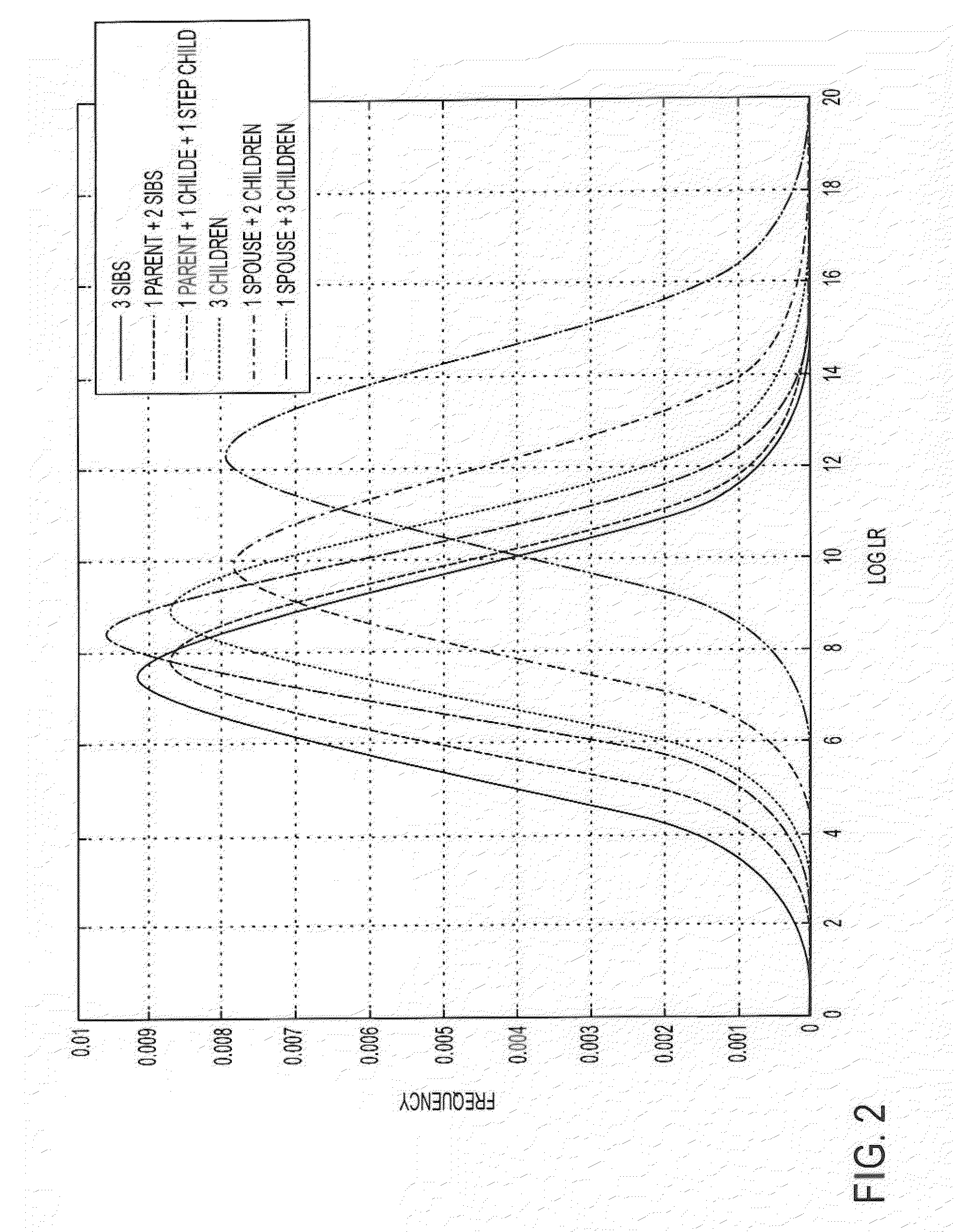Method and apparatus for mobile disaster victim identification
a disaster victim and mobile technology, applied in the field of mobile disaster victim identification, can solve the problems of incomplete dna profiles, approach breakdown, and forensic scientists' demands, and achieve the effect of maximizing the relative probability of obtaining a high probability of obtaining a correct match
- Summary
- Abstract
- Description
- Claims
- Application Information
AI Technical Summary
Benefits of technology
Problems solved by technology
Method used
Image
Examples
Embodiment Construction
[0010]Several embodiments are discussed herein which provide methods of associating an unknown biological specimen with a particular family by use of intelligent telecommunications apparatus. By “unknown biological specimen” as used herein is intended a specimen of an individual to be identified, for example, by DNA profiling by known electrophoresis or mass spectrometry or other such processes and then comparing the results with similar results of processes conducted on specimens of known individuals related to the individual to be identified in a blood familial relationship. Automated decision support for identifying a family pedigree for an individual to be identified, such as a missing person, crime, disaster or accident victim or crime perpetrator, may aid forensic scientists to select enough and the correct family individuals related to such an individual to be identified for DNA typing. Once available family members are identified that are related to an individual to be ident...
PUM
 Login to View More
Login to View More Abstract
Description
Claims
Application Information
 Login to View More
Login to View More - R&D
- Intellectual Property
- Life Sciences
- Materials
- Tech Scout
- Unparalleled Data Quality
- Higher Quality Content
- 60% Fewer Hallucinations
Browse by: Latest US Patents, China's latest patents, Technical Efficacy Thesaurus, Application Domain, Technology Topic, Popular Technical Reports.
© 2025 PatSnap. All rights reserved.Legal|Privacy policy|Modern Slavery Act Transparency Statement|Sitemap|About US| Contact US: help@patsnap.com



